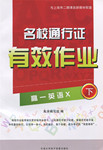题目内容
I cannot remember too many specifics of what I was taught in school, but I do remember learning the layers of the earth—inner core(地核), outer core, mantle, crust. I think it’s rather humorous that I know these, because studying the earth is not exactly something that would interest me. The only subjects I enjoyed in school were art and spelling. Every other subject I seemed to tune out. Anyway, the reason I learned the layer of the earth and actually enjoyed learning them was because my 6th grade teacher told us that she was going to make an ice-cream earth. For the entire week, I tried to imagine how in the world she was going to do this. She had us memorize the layers so that we would be able to tell her the names of them before we would get some ice-cream that Friday.
Friday came and everyone was excited. I was even more excited that I could tell the teacher the names of each layer. She got a big bowl, lined it with a chocolate cracker crust, then three layers of different colored ice-cream. I thought it was so cool that the crust was the crust.
This shows me that taking the time to teach creatively is worth it because unique activities are what students will learn, rather then simply reading everything from a text or listening to lecture done in black and white.
1.According to the writer, how did his teacher teach creatively?
A.She was humorous and taught geography in art and spelling classes.
B.She asked her students to make the ice-cream earth with colored layers
C.She made the ice-cream earth and used it as a reward for good learners.
D.She taught the lesson on Friday so her students could review it at the weekend.
2.The underlined words “tune out”(Paragraph 1) most probably means_____.
A.fail B.ignore C.hate D.forget
3.What is the point the writer wished to express in the text?
A.Children learn better through interesting experiences.
B.Ice-cream with a chocolate crust is children’s favorite.
C.A woman teacher is better at organizing good classroom activities.
D.A knowledge of the earth is best learned through ice-cream making
CBA

 名校通行证有效作业系列答案
名校通行证有效作业系列答案Some people have complained about this year's collection, New Writing 3, although I cannot understand why. Surely 500 pages of original writing of this quality, for £ 6.99, is pretty amazing?
Fiction-both parts of novels and complete short stories-makes up most of the book. There are some enjoyable pieces by famous writers, such as Candia McWilliam and Rose Tremain. It's a strange fact that the less well-known people seem to have written mainly about food. Take my advice about Jane Harris's Those Nails-this piece should definitely not be read just after meals. It contains some very unpleasant scenes which could turn your stomach!
There is fine work from nineteen poets, including R.S. Thomas and John Burnside. There are pieces from novels-in-progress by Jim Crace and Jane Rogers. Finally, there is a little non-fiction, which includes a very funny article by Alan Ursula Owen. This is an exceptional collection and I for one can't wait to see what next year's choice will include.
72. The writer of this passage is trying to give ________.
A. her (his) opinions about a new book
B. some information about new writers
C. some advice to new writers
D. her (his) opinions of newspaper journalists
73. The readers will ________ after reading the text.
A. find out more details about New Writing 3
B. learn what next year's collection will contain
C. find out something about Alan Ursula Owen's new novel
D. have no idea how to read a good book
74. The writer suggested that you might feel ________ after reading Jane Harris's piece.
A. hungry B. excitedC. happy D. sick
75. Which of the following statements best describes New Writing 3?
A.
| Great value: two novels, poems and articles for only£6.99 |
B.
| Great value: the best of new writing for only£6.99 |
C.
| Great value: poems by Tremain, Harris and Burnside for only£6.99 |
D.
| Great value: newspapers for a whole year with only two novels, poems and articles for only£6.99 |
